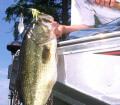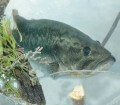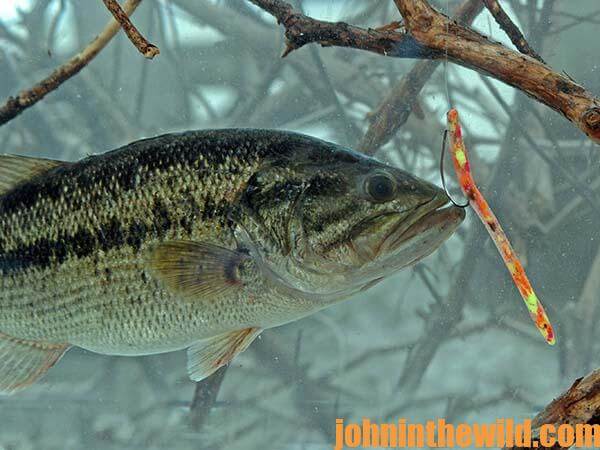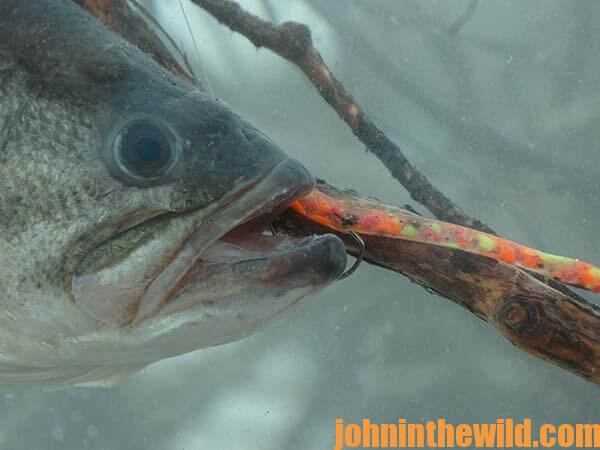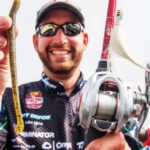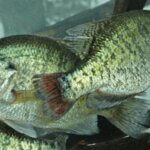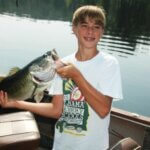John’s Note: Quite possibly the most-versatile bass lure ever created, the plastic worm belongs in every angler’s tackle box. His daddy was oil. His mother was heat, and his mentor was a fisherman. He swam into the world of bass fishing years ago and left such a definitive mark on the sport that no angler would consider searching for bucketmouths without him. Many sportsmen believe he is the most lifelike bait around, and some say he has the most action of any lure. And most agree that when bassing is tough, the plastic worm is the weapon on which you can rely to catch bass. Study these tactics to learn more about how the worm is bringing bass to the boats for the pros.
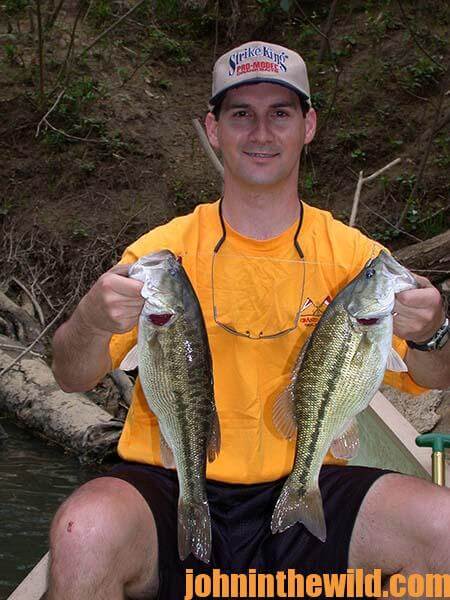 Deep and clear are two words that most bass fishermen don’t like to hear to describe a lake. When there is talk of a lake being deep and clear, an angler knows he must prepare for three things:
Deep and clear are two words that most bass fishermen don’t like to hear to describe a lake. When there is talk of a lake being deep and clear, an angler knows he must prepare for three things:
*Can the bass see the line?
*Does the bass probably want small lures?
*Realize the bass probably will be extremely difficult to hook, since the bait may be 20- to 40-feet below the water’s surface.
Therefore, when a fisherman hears the words, deep and clear, he often thinks of 6 pound test line, a split shot and an open hook rigged worm. When fishing deep, an angler often will file the barbs off the worm hooks, as most of these lakes don’t have many bushes or vegetation on which an open hook rig can hang. And, because so-much force is required for setting the hook on a worm that is 20 to 40 feet deep, filing the barbs off the hooks and not requiring the hooks to penetrate the worm usually gets a more efficient hook set and lands more bass.
There is a caution, however, when fishing light lines and little worms with open hooks in clear water. Be sure not to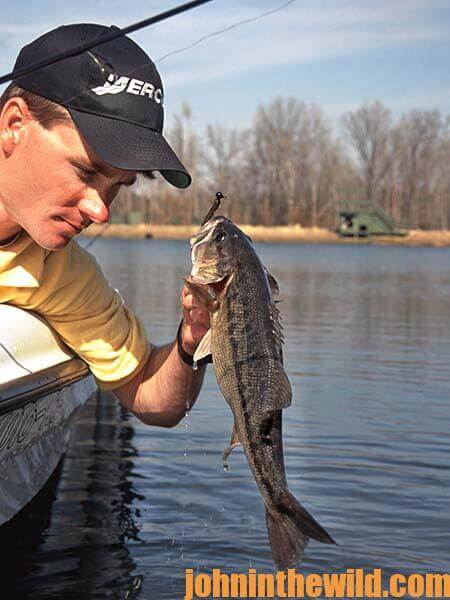 pinch the lead on the line too tightly. When the lead is pinched on a line, it weakens the line, and the line can break. But the open hook, split shot, light line, clear water rig often will produce bass in deep western lakes when all other tactics fail.
pinch the lead on the line too tightly. When the lead is pinched on a line, it weakens the line, and the line can break. But the open hook, split shot, light line, clear water rig often will produce bass in deep western lakes when all other tactics fail.
No matter which method of fishing the worm you choose, learn to fish the plastic worm. By understanding the difference aspects of worm fishing, you greatly can increase your catch of bass. The plastic worm has changed the way we all fish for bass, and it has taught us some new techniques of angling. And, even though the plastic worm has changed somewhat in appearance through the years, it still is one of the most deadly bass lures. And, to paraphrase Shakespeare, “Love all lures; but trust few like the plastic worm.”
To get “How to Win a Bass Tournament: Personal Lessons from 8 Pro Bass Fishermen,” “Reelfoot Lake: How to Fish for Crappie, Bass, Bluegills and Catfish and Hunt for Ducks,” “Catch the Most and Biggest Bass in Any Lake: 18 Pro Fishermen’s Best Tactics” and “How to Bass Fish Like a Pro,” click here.
John Phillips, winner of the 2012 Homer Circle Fishing Award for outstanding fishing writer by the American Sportfishing Association (AMA) and the Professional Outdoor Media Association (POMA), the 2008 Crossbow Communicator of the year and the 2007 Legendary Communicator chosen for induction into the National Fresh Water Hall of Fame, is a freelance writer (over 6,000 magazine articles for about 100 magazines and several thousand newspaper columns published), magazine editor, photographer for print media as well as industry catalogues (over 25,000 photos published), lecturer, outdoor consultant, marketing consultant, book author and daily internet content provider with an overview of the outdoors.

